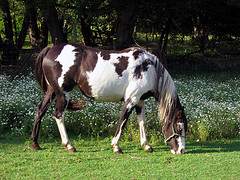For related articles and more information, please visit OCA’s Genetic Engineering page, Millions Against Monsanto page and our Myth of Natural page.
Whether to require labeling of genetically modified organisms (GMOs) is a hot issue in the ongoing debate about the risks and benefits of food crops produced using biotechnology. For more than a decade, almost all processed foods in the United States have contained ingredients from plants whose DNA was manipulated in a laboratory. Scientists have inserted a gene here or tweaked a gene there to help crops tolerate drought and resist herbicides better. The most common GMO crops in the United States are soybean, corn, cotton and canola. Because so many processed food products contain soybean or corn ingredients (e.g., high fructose corn syrup or soy protein), it’s estimated that 60 to 70 percent of processed foods in grocery stores contain GMOs.
Regulators and many scientists say GMO foods pose no danger to consumers. The American public isn’t so sure. Proponents of mandatory labeling frame the issue as one of consumer choice – consumers have a right to know what’s in their food and what they are feeding their families. The anti-labeling faction points to the lack of any evidence that GMOs are materially different from conventional foods and the important role GMOs are expected to play in alleviating famine in developing countries.
I. Current Labeling Policy
FDA requires labeling of GMO foods if: (1) the food contains a significantly different nutritional property; (2) it contains an allergen that consumers would not expect to be present or (3) it contains a toxicant beyond acceptable limits. In 2001, the FDA proposed voluntary guidelines for labeling of GMO foods.[1]
II. Arguments For And Against Mandatory Labeling Of GMO Products
There are a multitude of arguments both in favor of, and against, mandatory labeling of GMO foods. A summary of those arguments follows:
Arguments against Mandatory Labeling
Mandatory GMO labeling will only further the misconception that GMO foods are dangerous. There is no science that indicates or suggests that GMO foods are harmful to humans or animals. The American Association for the Advancement of Science, the World Health Organization and the European Union have all gone on record as saying that GMO foods are as safe as conventional foods. Labeling GMO products to satisfy the vocal pro-labeling movement will result in cost increases for all consumers. Studies done by companies opposing a ballot initiative in California that would have required labeling of GMO foods found that if the measure passed, the yearly food bill for an average California family would increase by $ 400. Requiring GMO labeling will lead to decreased product offerings as some manufacturers elect to discontinue certain products rather than deal with increased costs and regulation as well as anticipated consumer backlash. In 1997, the European Union began to require GMO labeling. By 1999, most major European manufacturers had removed GMOs from their products. Today there are almost no GMOs in European supermarkets. There is no need for mandatory labeling of GMO products because consumers who want to avoid GMO foods can purchase certified organic foods, which by definition cannot be produced with GMO ingredients.

